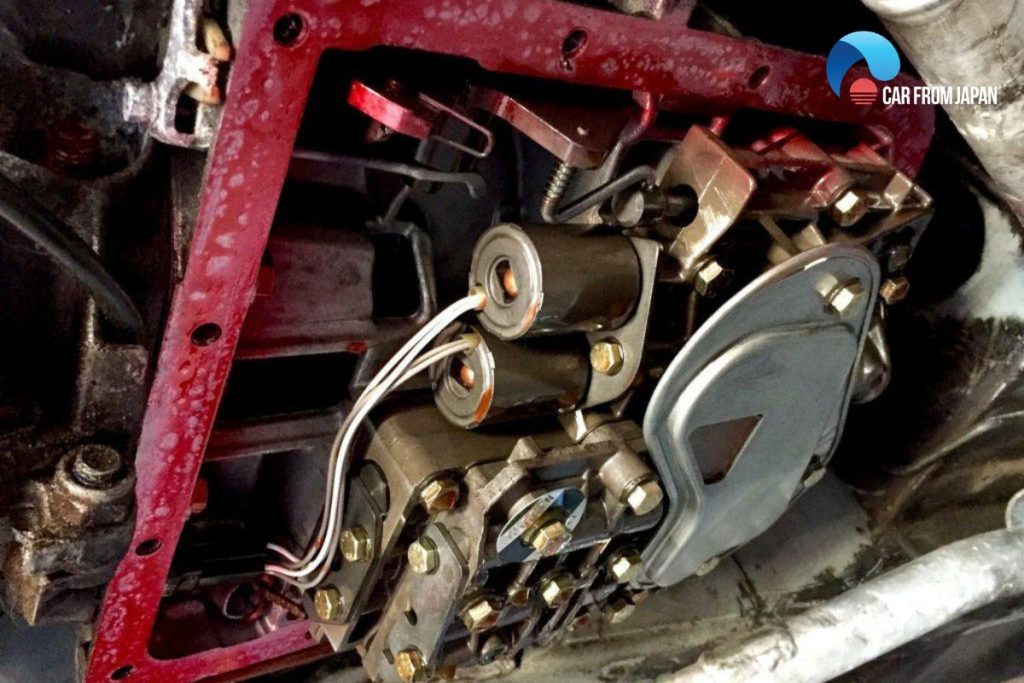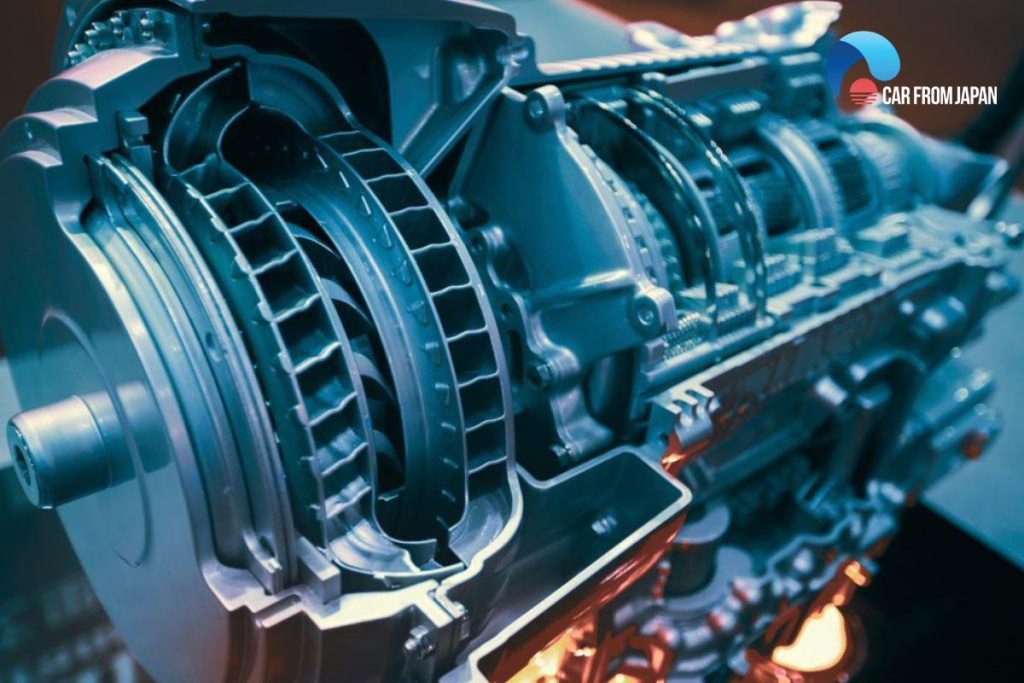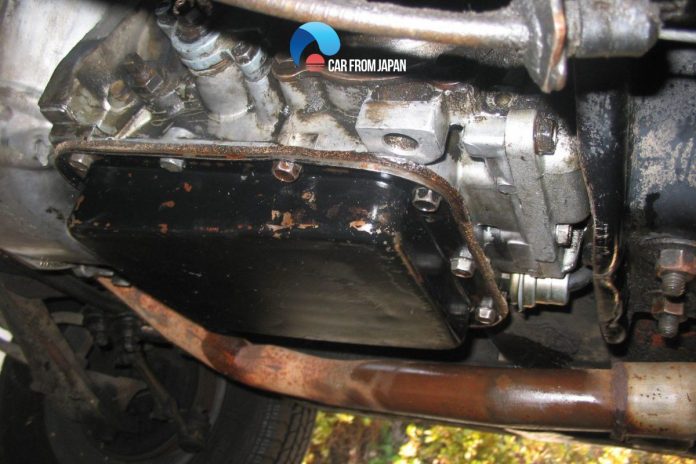Our cars are the best medium of transport taking us to the office and for long journeys. Thus, none of us has the time for transmission leaks. If a car leaks transmission fluid, a lot of time and money is involved.
Transmission usually leaks because of a loose pan in which bolts stay wobbly after changing a filter. However, this does not always happen for the same reason.
Because the fluid is the lifeblood of every vehicle, its leakage can cause troubles as well as a decent investment.
Contents
- What Causes Transmission Leaks?
- What Are The Top Fixes for Transmission Leak?
- FAQs on Transmission Oil Leak
- Why does my transmission only leak when the car is parked on a slope?
- Is it possible for engine coolant to cause a fake transmission leak?
- Why does my transmission leak more after a fluid change?
- Do transmission additives really stop small leaks?
- Why does my transmission leak more in hot weather?
- Is it dangerous to keep topping off transmission fluid instead of fixing the leak?
- Final Words
What Causes Transmission Leaks?
The major reason behind transmission leak is cracked pan gasket. Nevertheless, there are some other causes as well that cause its leakage. Here are a few common causes!
Broken Fluid Lines
The transmission fluid passes through moving parts, absorbing the heat, which it expels because of the aluminum transmission cooler.
These lines are the route to move ATF and are usually made of rubber. Often they start to leak due to external damage.
Degraded Pan Gasket
As said above, pan gaskets are the most common source of the fluid leak. Over the years, its material can degrade causing ATF to escape onto your driveway.
Another reason behind its leakage is improper pan gasket installation.

Whole in the Pan
The pan is located at the very bottom of the gearbox and is one of the most susceptible parts of the vehicle.
Although, it is made of a tough metal yet it is vulnerable to cracks and punctures. If the damage is serious, it is best to replace the whole transmission pan.
See More: Can You Drive Keeping Transmission Lights On?
Damaged Seals
To maintain hydraulic pressure and transmission leaks, an automatic transmission uses several seals.
These seals deteriorate over a period of time and naturally fray and crack over time. If this happens to be the case, chances of transmission fluid leak rise.
Cracked or Damaged Transmission Lines
Transmission lines are responsible for carrying transmission fluid between the transmission and the transmission cooler (if equipped) in the radiator.
They are usually made of metal or rubber and can be susceptible to damage due to various reasons.
Road Debris
Small rocks, debris, or road hazards can puncture or damage transmission lines. When a line is damaged, it can develop cracks or holes, allowing transmission fluid to escape.
Corrosion
Over time, especially in regions with harsh weather conditions or where road salt is used, transmission lines can corrode and weaken. This corrosion can lead to the formation of weak spots or holes in the lines.
Accidents or Collisions
In accidents or collisions, the impact can damage the transmission lines, leading to fluid leaks. Even a minor fender-bender can potentially damage these lines.
Excessive Transmission Fluid Pressure
The transmission operates with a specific level of fluid pressure to function correctly. If this pressure becomes too high, it can lead to fluid being forced past seals and gaskets, resulting in leaks. Several factors can cause excessive transmission fluid pressure.
Malfunctioning pressure regulator
The transmission is equipped with a pressure regulator that controls the fluid pressure. If this regulator malfunctions, it can cause pressure to increase beyond the recommended levels.
Blockages in fluid passages
Any blockages or restrictions in the transmission’s fluid passages can impede the flow of fluid, leading to a buildup of pressure.
Overfilling of transmission fluid
Adding too much transmission fluid during a service can cause elevated pressure levels because the excess fluid has less room to circulate properly.
What Are The Top Fixes for Transmission Leak?
While you know about different causes of transmission leaks, you must also be aware of various ways to fix them. Here are few points to get you started!
Timely Check the Fluid
It is very important to check the level of the fluid at every oil change. It is the most important maintenance tip of all.

Pay Attention to the Color of the Fluid
Keep a close eye on the color of the fluid. The new fluid color looks red and translucent while the older it gets, the darker it becomes. So change it once it changes the color.
Replace the Damaged Parts
Replace the damaged parts such as pan gasket, fluid lines, etc., in order to keep the transmission system working in the best manner.
It is advisable to take professional help rather than using some DIY techniques.
Cracked or Damaged Transmission Lines Fix
Repairing or replacing damaged transmission lines is essential to stop fluid leaks. The specific repair process may vary depending on the extent of the damage and the type of lines used. Generally:
If there are minor cracks or holes, it may be possible to patch or seal them temporarily. However, this is not a long-term solution, and replacing the damaged section is recommended.
For more extensive damage or corrosion, it’s best to replace the affected lines entirely.
This typically involves removing the damaged section and splicing in a new piece of line, which should be made of the appropriate material (metal or rubber) and properly secured to prevent future leaks.
Fix for Excessive Transmission Fluid Pressure
A mechanic will typically inspect and diagnose the issue, which may involve checking the pressure regulator and inspecting the fluid passages for blockages.
If the pressure regulator is faulty, it will need to be repaired or replaced.
Clearing any blockages or restrictions in the fluid passages is crucial to restoring proper fluid flow and pressure levels.
Ensuring that the correct amount of transmission fluid is in the system, neither overfilled nor underfilled, is also important in maintaining the correct pressure.
Note that driving with excessive transmission fluid pressure can lead to severe damage to the transmission’s internal components, so addressing this issue promptly is essential to prevent further damage and fluid leaks.
Check out this video from 1A Auto for more information on transmission fluid leak!
FAQs on Transmission Oil Leak
Why does my transmission only leak when the car is parked on a slope?
Because fluid pools toward one side of the pan or seals. A weak side gasket, filler tube O-ring, or axle seal may only leak under angled pressure.
Is it possible for engine coolant to cause a fake transmission leak?
Yes. If the radiator’s transmission cooler fails internally, coolant can mix with transmission fluid.
It often looks like a leak but is actually cross-contamination!
Why does my transmission leak more after a fluid change?
Fresh fluid has different detergents and viscosity. It can wash away sludge that was temporarily sealing worn gaskets, exposing real leaks.
Do transmission additives really stop small leaks?
Sometimes. Seal conditioners can swell old seals slightly, reducing minor leaks. But they are usually a temporary fix, not a long-term solution.
Why does my transmission leak more in hot weather?
Heat thins transmission fluid and increases pressure inside the case.
Weak gaskets or seals that hold under cooler temps may fail when fluid expands.
Is it dangerous to keep topping off transmission fluid instead of fixing the leak?
Yes. Aside from being messy and costly, leaks can worsen suddenly.
Running low even once can burn clutches and cause total transmission failure!
Final Words
Transmission leaks are common so do not panic if it happens. However, taking this issue casually is certainly not the right way to resolve it.
Gather some knowledge about it and stay updated with the potential ways to reduce it.




The transmission oil of my car, Honda fit sport 2007, keeps leaking after severally changing the seal and there are no cracks or holes in the pan too. It leakes through the seal and shaft area. What should I do again?
I appreciate the information given in this blog regarding the causes of transmission fluid leakage. Leakage of the transmission fluid could have disastrous outcomes and could jeopardize the performance of the transmission. So, the quality and quantity of the transmission fluid should be monitored regularly and if necessary should be replaced with suitable substitutes. The causes of the transmission fluid leakage should be located and repaired immediately to prevent the leakage of the transmission fluid.